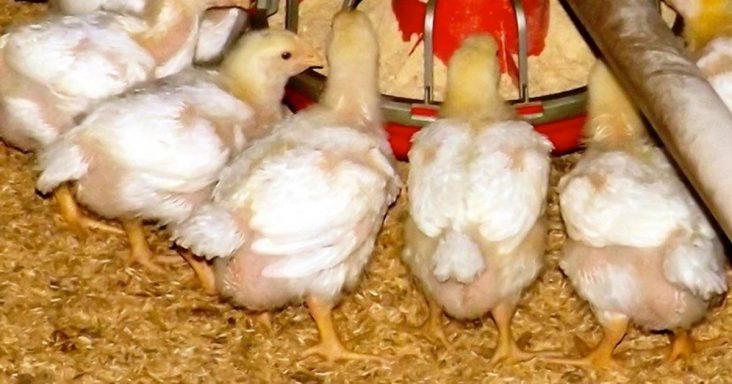Tyson Foods cuts 250 jobs in North Carolina, chicken inventories rise
by October 3, 2023 6:03 pm 3,593 views

Tyson Foods is again shrinking the size of its poultry business by cutting 250 jobs in a Wilkesboro, N.C., plant that makes cooked chicken products. Springdale-based Tyson reduced the second shift production at the plant that employs about 3,000.
Company officials said the shift reduction is a direct response to customer demand.
“We realize the impact on our team members and supporting them is our priority. We were able to offer these team members the opportunity to take other positions at the Wilkesboro plant and to apply for positions at other Tyson Foods facilities,” Tyson Foods spokesman Derek Burleson noted in an email. “We’re not providing any additional details outside of that statement.”
The layoffs in North Carolina come on the heels of six plant closures by Tyson Foods already this year as the company moves production to newer, more automated and efficient plants. Tyson said the plant closures would not materially decrease the company’s production capacity given the newer plants are more efficient. Three of the six plant closures are in Arkansas and southwest Missouri.
Tyson CEO Donnie King told Talk Business & Politics in August that its own chicken business was improving but there were macroeconomic challenges such as weaker demand and rising grain prices to manage.
Stephens Inc. reports chicken processing margins turned positive in September at 6 cents per pound. Average processing margins were negative each month from July back to October of last year. The September average of 6 cents per pound was still below the 5-year average of 7 cents a pound, but better than 3 cents per pound the same month last year. These margins are for commodity chicken and much of Tyson’s chicken portfolio is higher-margin given the deboning, trimming, cooking and other enhancements.
Retail chicken prices rose sharply amid the pandemic and profits were high in 2021. Consumers began to push back on higher prices as grocery stores featured lower pork prices and relatively lower beef prices to some cuts of chicken in the back half of 2022. Chicken companies kept production rolling and chicken supplies built up in cold storage from May through December of last year to about 950 million pounds. The industry started this year with more than 850 million pounds of chicken in cold storage and that level began to decrease slightly this summer, but remains at about 800 million pounds at the start of September.
Softer consumer and foodservice demand prompted Tyson and competitors to reduce production this fall, which is typically the seasonal low for the industry. Chicken production starts with egg sets in incubators, a leading indicator of supply for the next 2-to-4 months. The industry has reduced egg sets by about 3% between August and September. Egg sets were flat against a year ago in March but have trended lower since that time, falling by 2% in July, according to U.S. Department of Agriculture (USDA) data.
Stephens Inc. reports slaughter pounds in the industry were down 3% in late September from a year ago and egg sets were down 3.7% from a year ago, indicating the industry is applying the brakes to production for the time.
Wholesale chicken prices per the USDA are trending well below levels a year for commodity boneless, skinless breast pieces. Prices hit a high of $3.60 per pound in May of last year and fell to below $1 by year-end. Prices paid to processors like Tyson have struggled to recover amid the excess supplies but since July prices have been moving higher. In September, prices rose to nearly $1.70 per pound, slightly above the 5-year average. Tyson also sets its foodservice contract prices in the fall of each year. However, the company has indexed the contracts to grain costs in past years to help offset that risk.
Wholesale chicken tender prices have been around $1 per pound this entire year, well below the $1.60 per pound from a year ago. Leg quarter prices were down to 30 cents per pound in September, falling from highs near 50 cents per pound earlier this summer. Prices continue to trend lower heading toward year-end. Chicken wing prices are rising from this summer to about $1.50 per pound in September. Prices trended much lower below $1 per pound in July.
King said in August chicken would be the first to recover among Tyson’s three protein businesses. He said lower cattle numbers would likely mean higher beef prices for some time. The pork business is recovering better than expected with more hog supplies keeping production even with a year ago. Pork’s cold storage inventory is also not elevated like chicken, helping maintain pork prices. Retail pork prices averaged $4.70 per pound in August, according to the USDA.
Retail chicken prices for boneless chicken breasts averaged $3.29 last week, and marinated breast meat retailed for $8.87 per pound, twice the price a year ago. Retail leg quarter prices were $1.23 per pound last week, up from 94 cents a year ago. Boneless, skinless thighs retailed for $3.68 per pound last week, up from $2.63 the same week last year.
